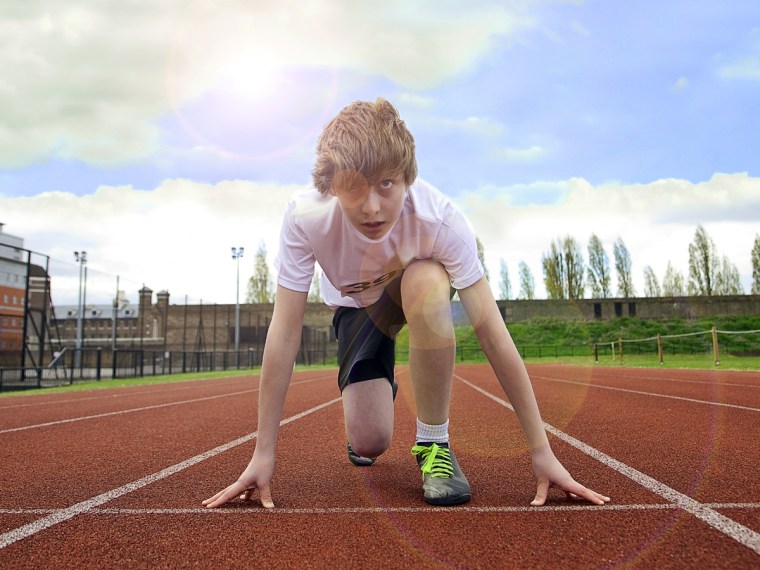Despite their "pumped up kicks,” kids today aren’t running nearly as fast as their parents did at the same age. In fact, in a one-mile run, youngsters now are about 1.5 minutes slower on those laps than children 30 years ago, according to a new study.
Australian researchers analyzed 50 studies on running fitness conducted in 28 countries between 1964 and 2010. More than 25 million healthy kids, ages 9 to 17, were part of the studies, all of which gauged fitness in terms of how far kids could run in a set time-frame or how long it took to run a set distance. In the U.S. alone, researchers found that children’s cardiovascular endurance — one of the cornerstones of physical fitness — fell an average of 6 percent per decade between 1970 and 2000.
The reason is simple: they're carrying too much body fat, making it “more difficult [for them] to move through space,” explains lead researcher Grant Tomkinson, Ph.D., a senior lecturer in the University of South Australia’s School of Health Sciences, whose research was presented Tuesday at the American Heart Association's annual meeting in Dallas.
Beyond battling obesity, kids also have to contend with an environment that is toxic to activity, he says.
“It’s not that kid’s today can’t perform as well as say their parents, but it’s just that they don’t perform as well,” says Tomkinson, citing lack of green space, suburbanization, changes in school-based physical education programs, and too much screen time watching TV or playing video games as likely contributors to diminished cardio fitness.
In an another study published this past summer in the Journal of Adolescent Health, researchers at the National Institutes of Health found only about half of adolescents are physically active five or more days a week, and fewer than one in three eat fruits and vegetables daily. The survey included nearly 10,000 children, between 11 and 16 years old, from 39 states.
“What we found, and others too, is the average young person is sedentary, has very little physical activity, and low levels of moderate to vigorous physical activity,” says Bruce Simons-Morton, senior investigator and chief of the health behavior branch at the Eunice Kennedy Shriver National Institute of Child Health and Human Development.
That’s very troubling to doctors.
“The ability to run a mile as fast as you can is a pretty good marker (of fitness),” but whether exercise intolerance translates into earlier cardiac disease still requires more data, says pediatric cardiologist Dr. Peter Aziz, of the Cleveland Clinic Children’s Hospital. “But I don’t think it’s too much of a leap of faith to say there is a big potential problem when kids have exercise intolerance and are obese, despite the need for more data. The time to act is probably now.”
The CDC recommends that children and adolescents participate in 60 minutes of physical activity every day, the majority of which should be aerobic. Though that may sound like a lot, the activity can be broken into four, 15-minute intervals, for example.
“Kids don’t have to do everything all at once,” says Tomkinson. “They can run, ride bikes, swim, play a game, do anything in bite-size chunks of time and reap some benefits.”
And these benefits extend to more than just cardiac fitness.
“Improving fitness also improves self-esteem, improves mood, reduces depression and even improves academic performance,” says Tomkinson. “It’s just a little investment that can lead to fantastic changes now and in adulthood.”
